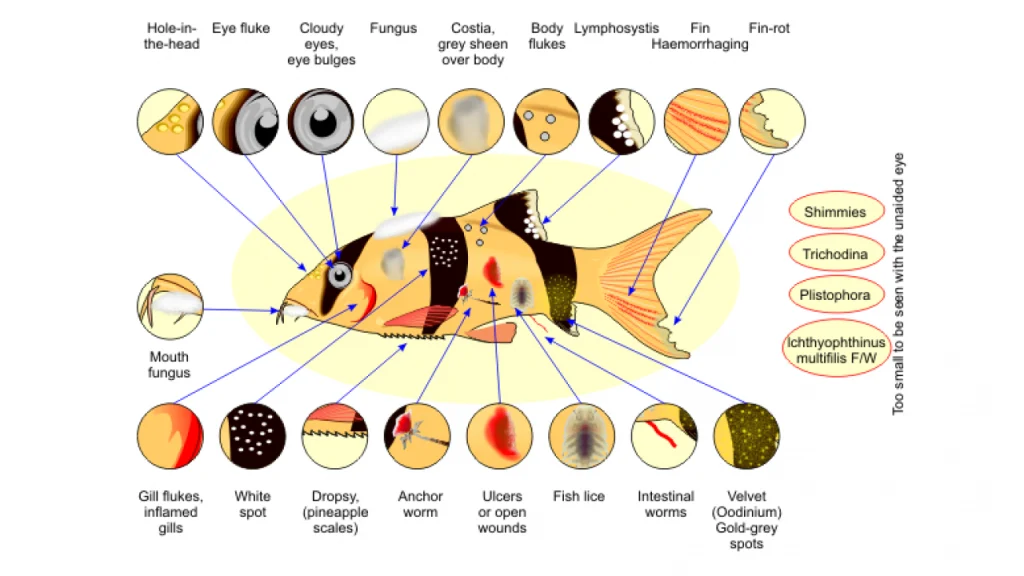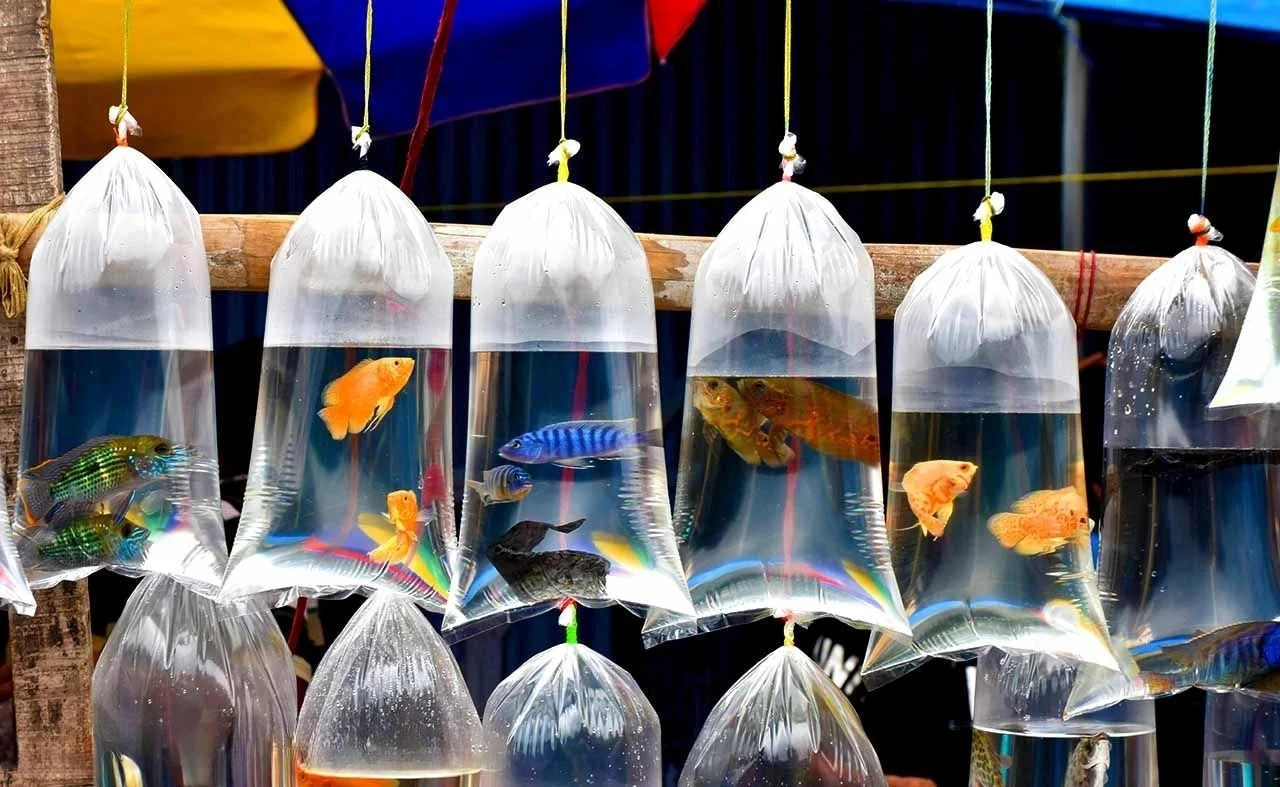
Table of Contents
Common Fish Diseases
1. Ich (White Spot Disease)
Description: Ichthyophthirius multifiliis, commonly known as Ich or White Spot Disease, is one of the most common and recognizable fish diseases. It manifests as small white spots on the fish’s body and fins. Causes: Poor water quality, sudden temperature changes, and stress. Symptoms:- White spots on body and fins
- Scratching against objects
- Labored breathing
- Raise the water temperature to 86°F (30°C) for several days.
- Add aquarium salt (1 tablespoon per 5 gallons of water).
- Use commercial Ich treatment medications.
2. Fin Rot
Description: Fin Rot is a bacterial infection that causes the fins and tails of fish to become ragged and frayed. Causes: Poor water quality, injuries, and stress. Symptoms:- Frayed and disintegrating fins
- Discoloration of fin edges
- Lethargy
- Improve water quality through regular water changes.
- Use antibacterial medications.
- Isolate infected fish to prevent spread.
3. Velvet Disease
Description: Velvet Disease, caused by the parasite Oodinium, gives the fish a gold or rust-colored dust appearance. Causes: Poor water conditions and stress. Symptoms:- Gold or rust-colored dust on body
- Rapid gill movement
- Loss of appetite
- Dim the aquarium lights.
- Use copper-based medications.
- Raise the water temperature gradually.
4. Dropsy
Description: Dropsy is a condition characterized by the swelling of the fish’s body due to fluid accumulation. Causes: Bacterial infections, poor water quality, and organ failure. Symptoms:- Swollen body
- Protruding scales
- Lethargy
- Isolate the affected fish.
- Improve water quality.
- Use antibacterial medications.
Preventive Measures
- Maintain Water Quality: Regular water changes and proper filtration are crucial to prevent the buildup of harmful toxins and waste products.
- Quarantine New Fish: Always quarantine new fish for at least two weeks before introducing them to your main aquarium to prevent the spread of diseases.
- Avoid Overcrowding: Overcrowded tanks can lead to increased stress and the spread of diseases. Ensure your tank is appropriately sized for the number of fish.
- Provide a Balanced Diet: A varied and balanced diet helps boost the immune system of your fish, making them less susceptible to diseases.
- Regular Monitoring: Regularly check your fish for signs of disease and address any issues promptly to prevent outbreaks.
Frequently Asked Questions (FAQs)
Q: How can I tell if my fish is sick? A: Common signs of sickness include changes in appearance (such as spots, frayed fins, or swelling), unusual behavior (such as lethargy, rapid breathing, or scratching against objects), and loss of appetite. Q: Can fish diseases be transmitted to humans? A: While most fish diseases do not pose a risk to humans, some bacterial infections, like Mycobacterium, can potentially affect humans. Always practice good hygiene when handling fish and aquarium equipment. Q: How often should I change the water in my aquarium? A: It’s recommended to change 10-20% of the water in your aquarium weekly. This helps maintain water quality and reduces the risk of disease. Q: What should I do if multiple fish are sick? A: If multiple fish are showing signs of illness, it’s important to check water quality parameters and make necessary adjustments. Quarantine affected fish and treat the main tank with appropriate medications. Q: Can stress cause fish diseases? A: Yes, stress weakens the immune system of fish, making them more susceptible to diseases. Stress can be caused by poor water quality, sudden changes in environment, overcrowding, and aggressive tank mates.Conclusion
Keeping your fish healthy involves regular monitoring, maintaining good water quality, and providing a balanced diet. By understanding common fish diseases and their treatments, you can ensure a thriving and vibrant aquarium. Remember, prevention is always better than cure, so take proactive steps to minimize the risk of diseases in your aquatic pets.
February 11, 2025
No Comments
February 5, 2025
No Comments
February 1, 2025
No Comments
January 27, 2025
No Comments
January 25, 2025
No Comments
January 25, 2025
No Comments

go
Thanks For Your Information .
It is a pleasure to read this weblog, thanks to its up-to-date information and interesting posts. Look into my web page Webemail24 for some really good points and find out more about Data Mining.